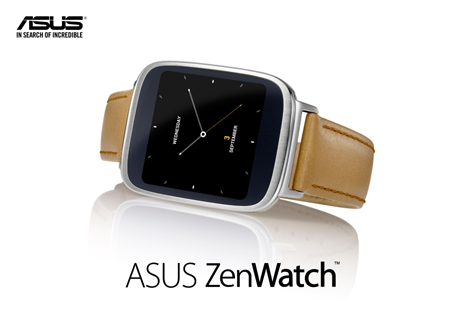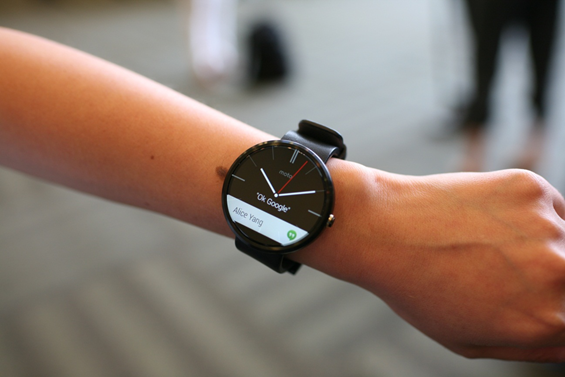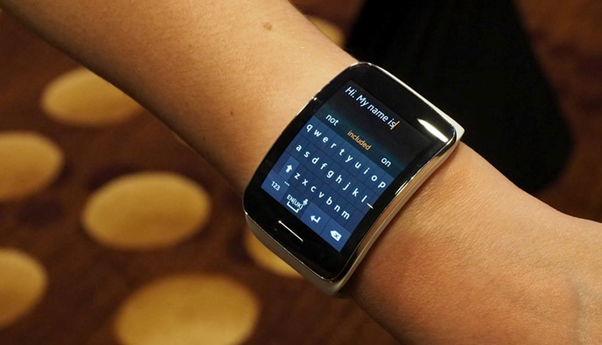ARM-based Smartwatches Shine at IFA
By Kinjal Dave, CPU Product Manager at ARM
As we head towards the end of 2014, I cannot help but reflect what we saw recently at the return of Europe’s biggest technology show and it was little surprise to see some of the big-name manufacturers unveiling yet more ARM-based wearables.
For those who are new to IFA, thousands of journalists, analysts and consumers travel every year from across the world and descend on Berlin for a six-day technology bonanza, with everything from TVs to smartwatches being unveiled to the expectant crowds.
With Autumn (or Fall, depending on which side of the Atlantic you are on) a notoriously hectic period for the tech world, the IFA represents one of the most important annual events for the industry, providing companies with a platform to launch the devices they hope will take the festive season by force.
2014 has undoubtedly been the year of wearable technology, and smartwatches have been at the heart of wearable innovation. We have seen devices become more maturely built with a number of manufacturers learning from first-generation devices to deliver an improved user experience. Tech companies are better understanding what consumers want, and the devices unveiled at IFA demonstrate the progress made in making wearables the most personal technology we have ever seen.
Many of the newly released smartwatches have been built on Android Wear, the Google operating system built specifically for smartwatches and other wearable devices. ARM Cortex-A series processors are pervasive in Android-based smartwatches, demonstrating the wider software ecosystem built alongside ARM hardware.
One of the many exciting announcements made my manufacturers was ASUS’s unveiling of their first smartwatch. The ASUS Zenwatch is an Android-based device running on a Cortex-A7 version of the Qualcomm Snapdragon 400.

The Cortex-A7 features a scaled back clock speed to increase power efficiency, and is one of ARM’s lowest power application processors, with power, performance and area (PPA) optimizations allowing the design to match extremely high efficiency requirements for wearable devices. The Cortex-A7 also integrates a sleep mode in order to preserve power when the device is not in use. This provides the device with a competitive day-long battery life, which ASUS hope to be able to extend before the device hits the market.
Motorola were another company to release a much-hyped smartwatch, with the unveiling of the Moto 360. The stylish circular-faced watch features a single-core Cortex-A8 based Texas Instruments CPU. The Cortex-A8 design is intended to offer the most flexible scalability, ranging from 600MHz to over 1GHz. The 320mAh battery (or 300mAh if you take iFixit’s word for it) inside the Moto360 should provide at least one full day of power before requiring a recharge. The device also runs Android Wear and has 4GB of internal storage and 512MB RAM allowing you to swiftly download and use all of your favourite apps from Google Play. On top of this, the Moto 360 has an integrated pedometer and heart rate monitor, features which look set to become increasingly standard on future smartwatches.

Another company with a big announcement was Samsung, with the release of the Samsung Gear S. The Gear S is Samsung’s sixth wrist wearable, following on from the Galaxy Gear, Gear Fit, Gear 2, Gear 2 Neo and Gear Live. Alongside the Gear 2 and Gear 2 Neo watches, the Gear S runs the Tizen operating system. The device features a dual-core 1GHz ARM-powered Snapdragon 400 CPU, with 4GB of internal memory and 512MB RAM, and will reportedly hold more than a single day of charge within its 300mAh battery.
What differentiates the Samsung Gear S from many other smartwatches is the ability to use it as a standalone device, thanks to its 3G connectivity. This requires the device to have its own SIM card, but allows users to send messages and make calls directly from the device itself. The provision of a smartphone-like feature set alongside an above-average battery life is in part thanks to the highly tuned energy-efficient ARM-based core inside it. The Samsung Gear S is further evidence of the emergence of two types of smartwatch; the smartphone connected type and the standalone device. Both require different types of functionality and have many different requirements, but the retention of an ARM core demonstrates the flexibility and personalisation of the IP.

On top of these, other ARM-based wearables announced at IFA include the Sony Smartwatch 3 and the LG G Watch R, both of which use the low-power Cortex-A7 processor. With six smartwatches released at the IFA and all of them using ARM CPU designs, it is clear that ARM and its partners are driving the momentum behind the rapidly evolving smartwatch market.
With ARM-based processors at the heart of so many smartwatches, these processors are becoming synonymous with the wearable revolution and encouraging engineers to further develop the hardware and software ecosystem surrounding them. This is strengthening the ARM partnership and improving the way in which products featuring our IP are enjoyed by customers. ARM-based products are set to continue to drive wearable innovation forward. It will certainly be interesting to see how smartwatches have developed at the IFA in a year’s time. Want to read more about ARM’s presence in wearable technology? Join the ARM Connected Community and explore the Internet of Things group.






